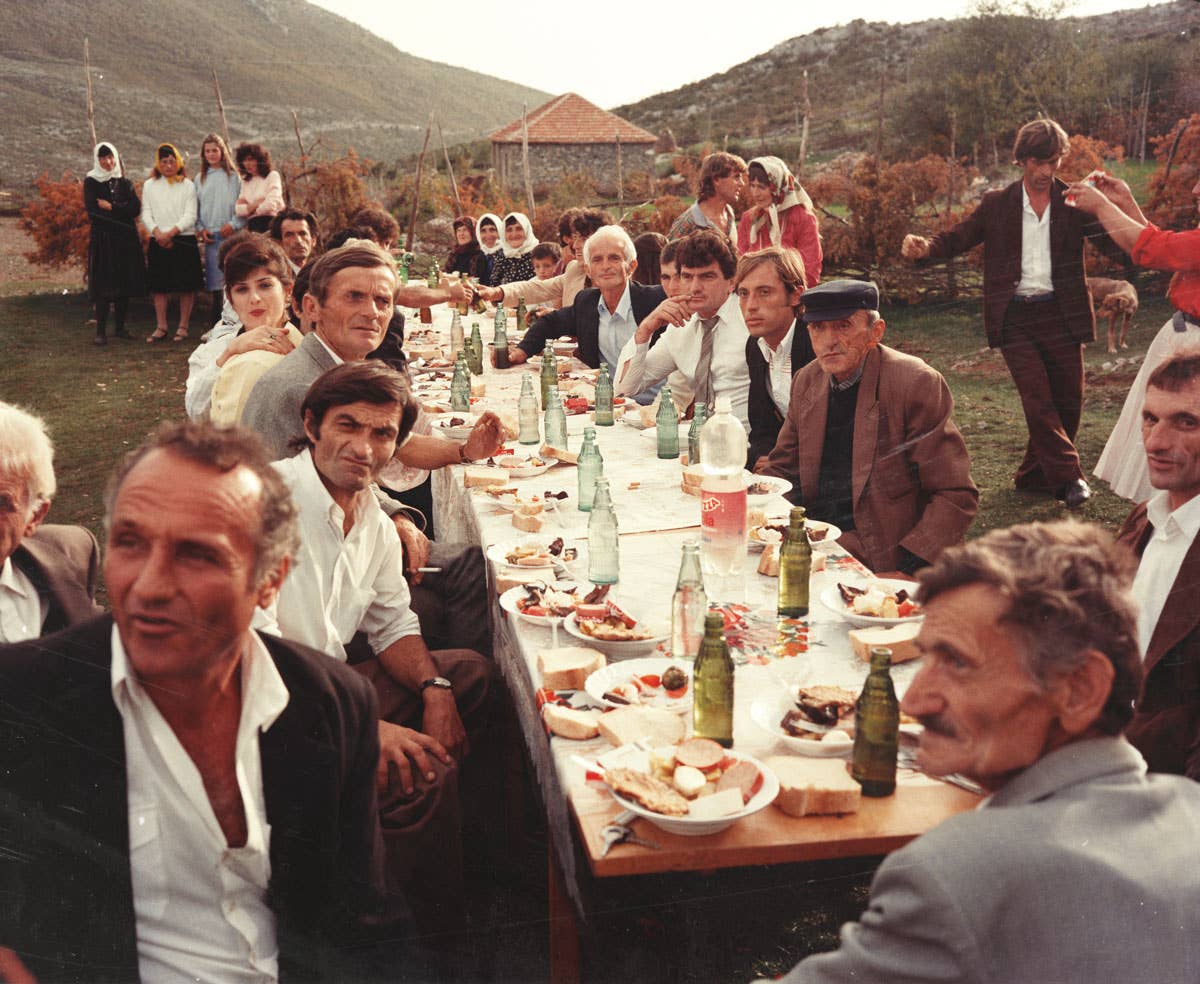
Eastern Promise
After years of turmoil, Albania preserves a rich culinary heritage—one that embraces the eclectic influences of its storied past
My first two days in Albania's capital city, Tirana, where I've come to research a novel I'm writing about an Albanian immigrant who moves to New York, I have no idea what I'm eating. In Blloku—the now fashionable neighborhood that was once the private enclave of feared communist dictator Enver Hoxha—most of the stylish new restaurants have menus translated into English. Still, they don't offer a lot of guidance, and the waiters, however friendly, speak only Albanian. What would I like for dinner? Cigars? Roast Mrs. Goat? Sheep interiors? Sheep interiors?
I keep pointing to various items, hoping for the best. And never—not once—do I have a bad meal. Mystery dish after mystery dish, the food is astonishingly fresh, delicately spiced, and comforting. Forty-eight hours after I land, in the central market in Tirana, I think of my Albanian neighbor in Manhattan who warned me, “Don't eat any street food. Don't go near any street food.” I'd nodded obediently then, but now I find myself eyeing a sheep's head rotating on a spit in the market. The only thing that stops me from buying one is that the sheep seem to be so dolefully eyeing me back.
This visit is my first to Albania, and I'm venturing into culinary terra incognita. It's years after Hoxha forbade Albanians from traveling and besieged them with propaganda about the evils of the West, years after the communist rulers were overthrown in 1991, and a 1997 banking scandal led to the collapse of the entire economy. Albanians are acutely aware that they are in the process of entering a brave new world, while trying to preserve what was valuable about the old one. And luckily, much of what seems worth preserving has to do with food.
Over the course of the two weeks I'm here, I register how much Albanian cuisine reflects the influence of the invaders who have conquered and occupied the country throughout its troubled history. At a dinner party in Tirana, a group of writers ironically thank the Ottoman Empire for baklava, the best thing, they claim, to have come from centuries of Turkish rule. In fact, much about Albania's cuisine feels tinged with Middle Eastern influences. The k__öfte is reminiscent of those in Istanbul and Tehran. Likewise, the egg, rice, and lemon soup; stuffed grape leaves; and the tarator (made from cucumbers, yogurt, and dill) are similar to those in Greece, a country with which Albania has long been in conflict. Italy left its stamp in the country's omnipresent pizzerias.Albanians would be quick to tell you that their version of Balkan cuisine is the best. And I find that hard to argue. The upside of the time warp in which their culture still partly exists is that it's been spared the damage that modern technology—pesticides and herbicides, excessive processing, long-distance transportation—has done to our food supply. When Lavdie Shehu, the chef at Tirana's rustic Sofra e Ariut restaurant, serves me "country chicken," the tiny succulent bird makes even our most pampered free-range chickens seem flavorless and wan. Most restaurants bake their own bread, and at the markets, it's common to see women selling rich yellow butter they churned at home.
Albanian Baked Lamb and Rice with Yogurt (Tave Kosi)
Garlicky lamb and rice baked under a thick, tart veil of yogurt is a dish beloved throughout Albania. Get the recipe for Albanian Baked Lamb and Rice with Yogurt (Tave Kosi) »
Those markets also boast snack stalls. Grape leaves taste like they were picked minutes before being stuffed with rice and served warm; the “cigars” that puzzled me turn out to be rolls of phyllo stuffed with cheese and herbs.
At sit-down meals there are dozens of varieties of olives, salads, platters of pickled cabbage, peppers, eggplant, and large white beans cooked until they become extraordinarily creamy. These dishes are followed by warm entrées like harapash, a cornmeal stew made with mint, walnuts, and diced lamb liver, and pershesh, a Thanksgiving-esque cornbread stuffing soaked in rich stock with bits of chicken or meats like mutton or beef. It's one of my favorites and even makes it into my book entitled My New American Life (I give the protagonist's grandmother a killer version).
Despite myriad regional specialties, everyone I ask seems to have the same favorite foods. One of the most popular is tavë kosi, a simple dish that is beloved throughout the country, and which I sample at a friend's home in the countryside. The dish consists of chunks of lamb and rice simmered until tender, then baked under a puffy crust of yogurt. Yogurt is ubiquitous in Albanian cuisine; it appears in everything from soups and drinks to sauces and sides. This yogurt is clean and pure, made a stone's throw away at a nearby dairy. Albania has historically been a dairy-producing country, owing, no doubt, to the well-fed cows I see grazing during my drive up. As I dig into my tavë kosi, the lamb shreds easily under my fork, each rice kernel is swollen with savory broth, and the yogurt provides a tangy counterpart to it all. It's my first country meal, and for me it defines the very essence of Albanian food: fresh, simple, and resourceful.
Keep Reading
Continue to Next Story










